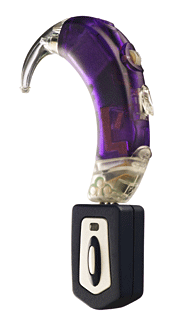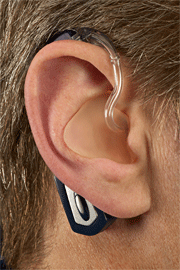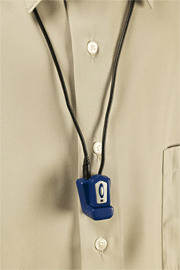Topic: Eli's Coming: Wireless Connectivity from Mobile Phones to Hearing Aids
 Beck: Good Morning Jerry. Thanks for your time today.
Beck: Good Morning Jerry. Thanks for your time today.Ruzicka: Hi Doug. No problem. Always nice to chat with you.
Beck: Jerry, I know you've been the President of Starkey for seven or eight years now, and past Chairman of HIA, but if you don't mind, I'd like to focus today's chat on the ELI product?
Ruzicka: Sure thing, Doug. That would be great.
Beck: OK, let's start with the word ELI and the definition? What is it and where did it come from?
Ruzicka: ELI is an acronym. It stands for EAR LEVEL INSTRUMENT, but that was just our internal code word for the project, and it was never meant to be used in marketing...but it seemed to work well, and the name stuck. ELI is the first Bluetooth® device designed specifically for application to hearing aids. So in essence, you can think of it as a wireless adapter which allows hearing aid users to use a multitude of devices wirelessly with their hearing aids.
 Beck: And I guess the primary application would be mobile phones?
Beck: And I guess the primary application would be mobile phones?Ruzicka: Exactly right. The ELI module is very easy to use. When a call comes in, it rings through the hearing aid itself via the ELI module, instead of ringing from the phone. To answer, the wearer simply presses the button on the ELI module. If the caller hangs up, ELI recognizes that the call is finished and disconnects automatically. Alternatively, if the wearer wishes to hang up, he or she can do so by pressing the button. You will need the mobile phone only to dial.
There are many potential applications, all of which eliminate wires and cables, such as music systems, TV systems, computers etc. ELI works with Starkey devices and other manufacturers, too. As you know, Doug, most new mobile phones are Bluetooth-compatible and the wireless transmission is very impressive. So ELI is small and flexible, weighing in at only four grams.
Beck: What if the hearing aid user is well fit and loves their current hearing aid, but it does not have a Euro Plug?
 Ruzicka: ELI can also be used with our T-Coil neck loop. So if the patient does not have a Euro connector on their hearing aid, but they do have a T-coil, the neck loop can be worn, and that will send the wireless signal to the hearing aid via the T-Coil.
Ruzicka: ELI can also be used with our T-Coil neck loop. So if the patient does not have a Euro connector on their hearing aid, but they do have a T-coil, the neck loop can be worn, and that will send the wireless signal to the hearing aid via the T-Coil. Beck: Wow. That's impressive! So in essence, the vast majority of hearing aids can use ELI via the Euro Plug or their T-Coil to wirelessly connect them to the sound source, such as a mobile phone?
Ruzicka: That's the idea. And of course, through the wireless connection, we're able to maximize the signal-to-noise, and importantly, people using mobile phones get virtually no digital interference. ELI has 140 hours of standby time, with 2.5 hours of talk time when used with a cell phone. Another really nice feature is that the cell phone can be up to 33 feet away, and it'll still work just fine.
Beck: When will ELI be available?
Ruzicka: We're scheduled to begin shipping product late in July.
Beck: Fantastic. Jerry, thanks for your time.
Ruzicka: You're welcome Doug. Thanks for your interest.
For more information visit www.elihearing.com and www.starkey.com

